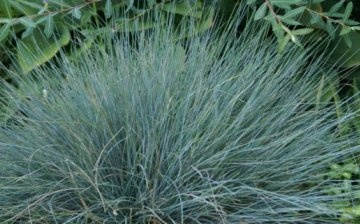Gray fescue - decorative cereal
In our country, for the purpose of landscaping, gray fescue is widely used, which is a low perennial grass, the narrow linear leaves of which are painted in blue-gray color. It grows with the formation of a semicircular lush bush, reaching a height of 30-60 cm. It is characterized by gray-green inflorescences collected in soft panicles on a straight stem. After they have faded, they take on a light brown color. The flowering time of this herb is in June, July.
With its silvery color, this grass enlivens the composition of the site. No wonder it is grown in flower beds, in curbs, mixborders, rabatkas. She is the only decorative cereal used to create carpet flower beds. Gray fescue is also suitable for planting in the form of arrays located near shrubs and lawns. It can grow in baskets and containers with beautiful flowering.
- in the spring, the remaining foliage should be removed from the bush;
- after the panicles have faded, they must be cut off, then they will not give seeds;
- moderate watering (excess moisture is not needed);
- with a frequency of once within one to two years, it is recommended to divide and transplant the bushes. This is due to the fact that after 2-4 years, if this cereal is cultivated in the same place, it tends to die off. In addition, replanting with an interval of 2 years helps to ensure that the leaves take on a more intense color.



